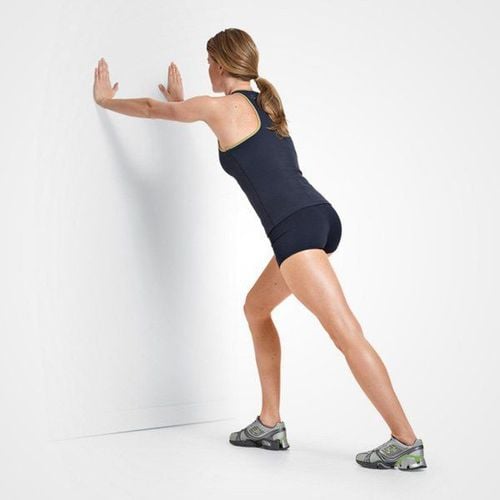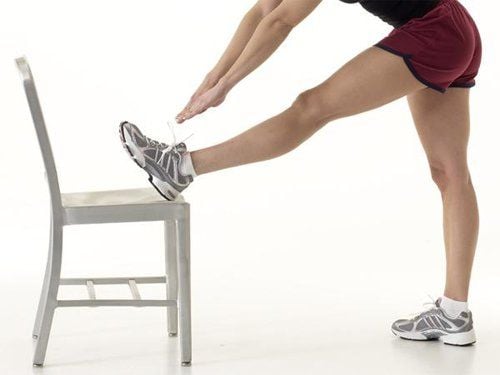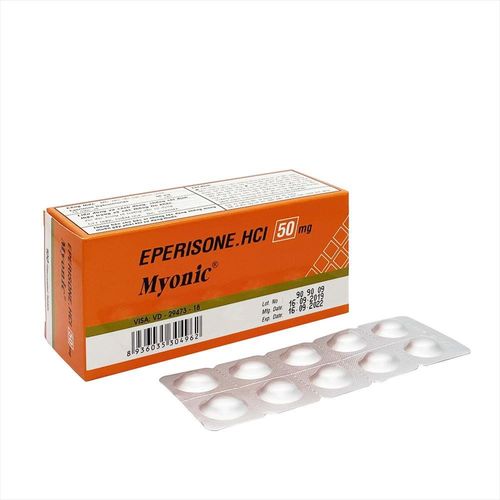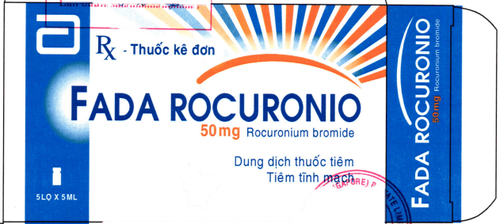This is an automatically translated article.
People who participate in sports that involve sprinting are prone to strain or injury in the muscles. Because people use the tendons of the leg muscles for daily movements such as walking, cycling, etc. Stretching the leg muscles will help people avoid muscle strain and muscle tear. This article will discuss the best 5 simple stretching exercises to try at home, when to use them, how often to use them, and the benefits of leg stretches.1. The benefits of stretching exercises
Tight leg muscles are a common problem for many people. If our leg muscles are strained, or if we are experiencing a hamstring injury such as a hamstring strain, then it is essential to see specialists in the field of physical therapy. Physiotherapists can teach hamstring stretching exercises, like the ones we'll cover below, to help you improve your overall flexibility. of leg muscles.
Bài tập kéo giãn cơ giúp cải thiện tính linh hoạt của chân
1.1. The benefits of leg stretch exercises
The hamstring muscle group is located at the back of the thigh of the leg muscles and is responsible for our knee flexion or flexion postures. Because the hamstrings also cross the hip joint at the back of the thigh, they also help the glutes lengthen the leg during activities like running and walking.While research is still ongoing to evaluate the effectiveness of hamstring stretches, there are a number of reasons we should practice to increase hamstring flexibility, including :
Prevent Injury Prevent or treat low back pain Improves overall mobility. Maintaining mobility in the legs and thighs can also help us maintain optimal exercise or sports performance. Stretching the hamstring after physical activity can help reduce late-onset myopathy (DOMS) in these muscle groups. An exercise that increases flexibility in the hamstrings in general can improve the way we move. Before starting these exercises, or any other exercise program, talk to your doctor or exercise teacher to make sure the exercises you want to do are safe. and suitable for you.
1.2. Static versus dynamic relaxation
The choice of a static stretch or a hamstring muscle stretch depends on the time and intensity of each person applying this muscle group during exercise.Static stretches are movements where the practitioner will maintain a position or posture for a few seconds. These movements are best done after completing the exercises, when the muscles are still warm.
Dynamic stretches are movements that include controlled movements to help warm up the body and prepare our muscles for stronger and more flexible movement. They are best done before a workout.
To transform static stretches into dynamic stretches, the practitioner only needs to spend 60 to 90 seconds continuously moving in each pose with steady, controlled movement. If you experience pain or unusual sensations in your hips, thighs, or legs, stop exercising and talk to your trainer or doctor.
2. 5 simple stretching exercises to try at home
2.1. Simple hamstring stretching exercise
First, start with this simple hamstring stretch (aka simple hamstring stretch). For people with chronic low back pain or sciatica, this exercise can cause back strain and discomfort, so proceed with caution. The steps to perform a simple hamstring stretch include:Sit on the floor with both right legs extended. Extend your arms and reach forward by bending at the waist as far as possible while keeping your knees straight. Hold this position for 15-30 seconds. Slowly release and return to the starting position. Relax for about 5 seconds Repeat this movement three times. For optimal stretching, make sure to stretch until you feel a slight pull in the back of your thigh. If you feel the pain is too much, you should stop this exercise and move on to other exercises.
2.2. Hurdler hamstring stretch exercise
The Hurdler hamstring stretch is a simple exercise that can be performed on the floor with an exercise mat. Steps to perform the Hurdler hamstring stretch include:Sit on the floor with one leg extended. Bend the other leg at the knee and place the sole of the foot in the inner thigh of the opposite leg. Extend your arms and reach forward with a straight leg by bending at the waist as much as you can. Hold this position for 10 seconds. Slowly release and return to the starting position. Relax for about 5 seconds. Repeat with the other leg.
2.3. Standing Tendon Stretch (Both Legs At Once)
The next hamstring stretch is also a simple move that can be done anywhere. The standing hamstring stretch is done in a standing position and straightens both legs at the same time. Here are the steps for us to do the hamstring stretch when standing:Stand and cross your legs, right foot in front of left foot. Slowly lower your head so that your forehead is almost in contact with your right knee by bending at the waist. Keep both knees straight. Hold this position for 15-30 seconds. Slowly release and return to the starting position. Relax for about 5 seconds. Repeat for the other side by crossing the left leg in front of the right leg.
2.4. Standing Tendon Stretch (One leg at a time)
The one-leg hamstring stretch may be the easiest hamstring stretch to do. The one-leg standing hamstring stretch can be done anywhere at home, in the office, or outdoors and doesn't require any special equipment. Steps to do a one-legged hamstring stretch include:Stand upright with one heel resting on a stack of booklets, a stool, or a brick (if exercising outdoors). Or even, we can use the curb, but watch out for the cars. Keep your knees straight. Raise your arms high in the air so that your arms are level with your ears. The movement of bringing our arms up is the exact opposite of bringing our hands down, which will keep our backs straight. Keep your back straight. Lean forward slightly from the hips. Bring your hands forward until you feel a stretch in the hamstrings behind your thighs. Hold this movement for 15 to 30 seconds then slowly return to the starting position, rest for about 5 seconds and repeat three times. Switch legs and perform the movements above on the other leg.

Căng gân đứng bằng một chân là bài tập đơn giản có thể thực hiện tại nhà
2.5. Stretch the ligaments with a towel
Trainers or physical therapists can instruct practitioners to use household items to perform hamstring stretches, and most people can use their own towels. To perform ligament stretches with a towel, many people even use a strap or belt instead. The hamstring stretch with a towel is also a simple and effective method of stretching. Steps to perform include:Lie on your back on the floor. Loop a long towel around the soles of your feet and hold the ends with both hands. Slowly pull on the towel to lift your straight leg up. Make sure to keep your knees straight. Feet without towels must be fixed on the ground. Bring your legs up until you feel a stretch behind your thighs. You may also feel a stretch in your calves. This is normal. Hold this pose for 15 to 30 seconds, and then relax and return to the original position. Repeat the above movements three to five times for each leg. Remember that stretching the hamstrings with a towel will provide comfort during the exercise; If it causes pain, stop exercising immediately and notify your trainer or physical therapist.
If you feel that your leg muscles or hamstrings are not strong enough for exercise and sports, visit a fitness trainer or physiotherapist to find out. understand the best ways to improve hamstring flexibility. Many studies have been and are being done to prove stretching can prevent injury or improve athletic performance. Trainers or physical therapists can prescribe certain exercises to help people stretch their hamstrings safely and effectively.
Please follow the website ( www.vinmec.com ) for more information on health care instructions, which we will update regularly.
Please dial HOTLINE for more information or register for an appointment HERE. Download MyVinmec app to make appointments faster and to manage your bookings easily.
Reference source: verywellfit.com, nhs.uk












